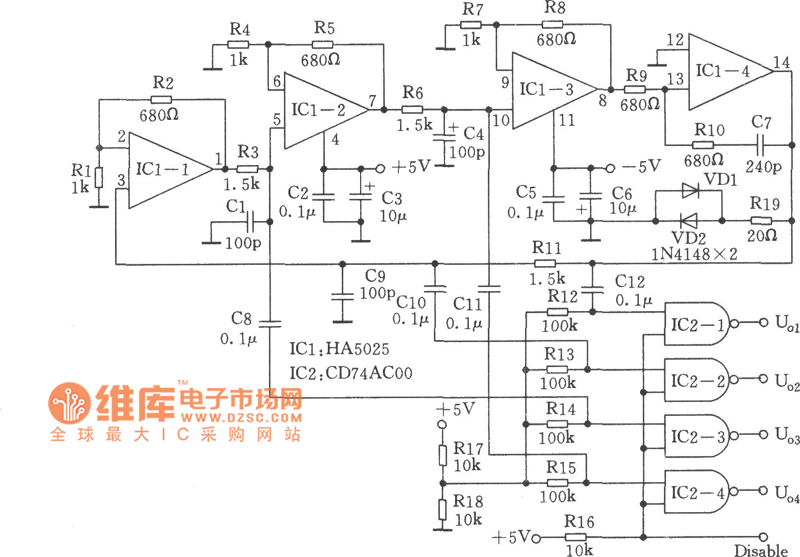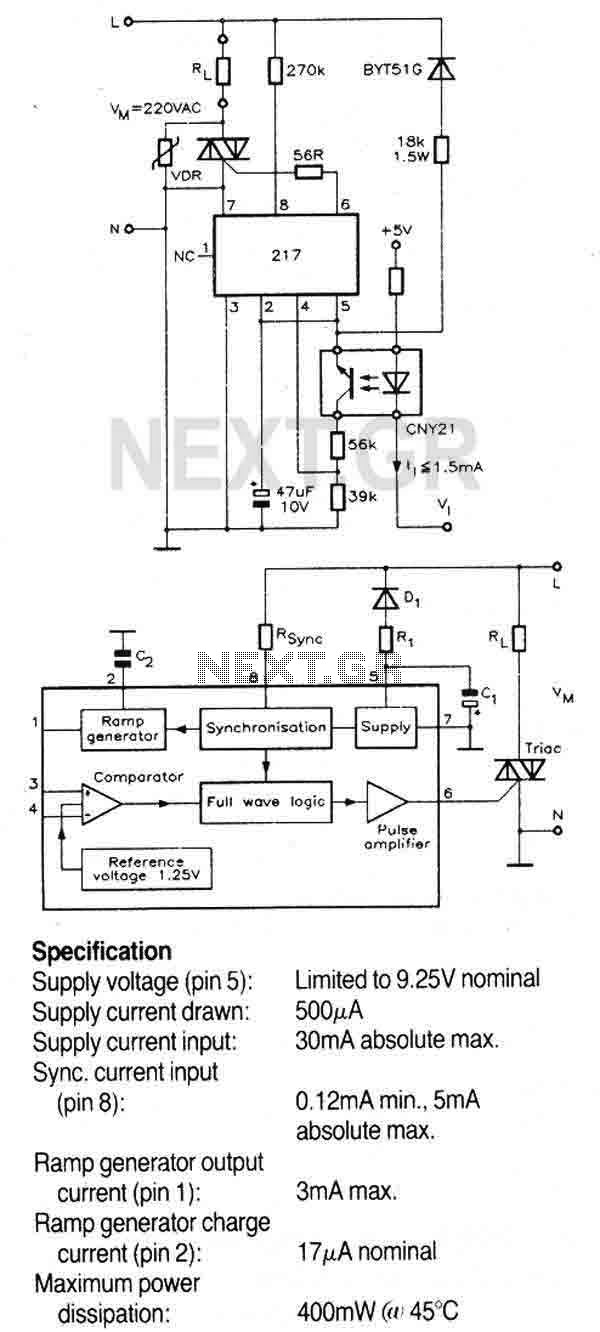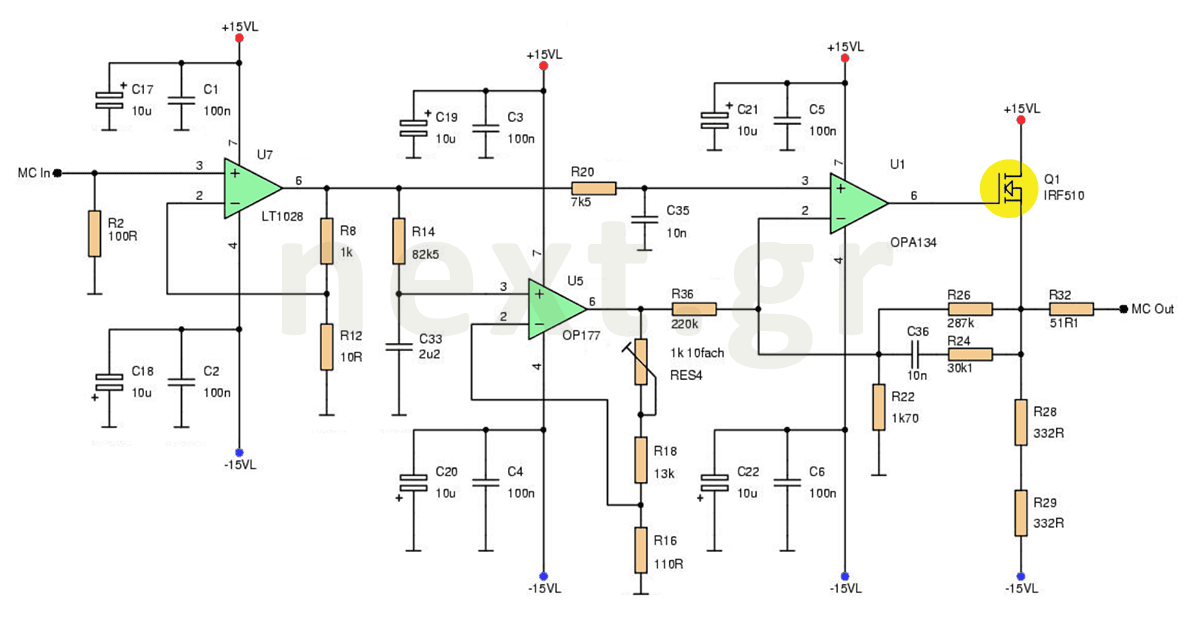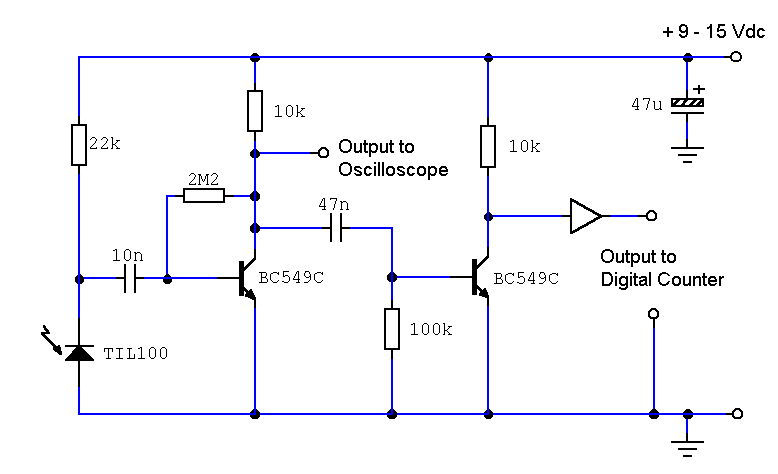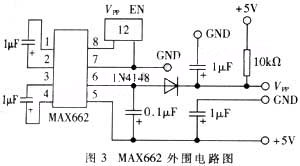
Bass-treble tone control circuit
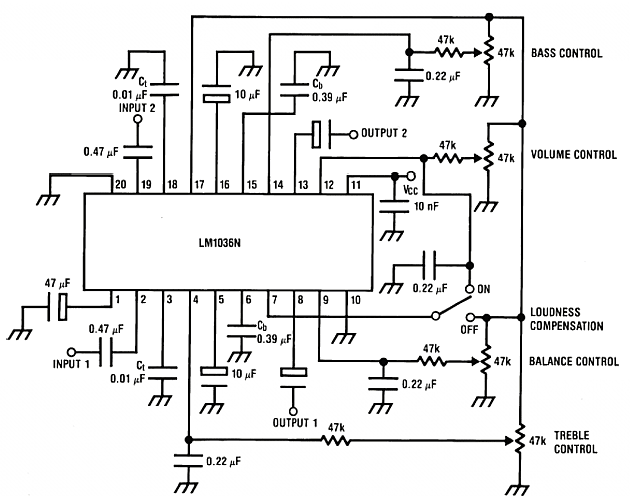
The LM1036 is a DC-controlled circuit designed for adjusting tone (bass and treble), volume, and balance in stereo applications such as car radios, televisions, and audio systems. It features an additional control input for straightforward loudness compensation. The circuit includes four control inputs that manage the bass, treble, balance, and volume functions through the application of DC voltages from a remote control system or from four potentiometers that can be biased using a Zener regulated supply provided within the circuit. The tone response for each adjustment is determined by a single capacitor selected to achieve the desired audio characteristics.
The LM1036 integrated circuit operates by facilitating user-friendly audio control in various stereo applications. The primary features include tone control, volume adjustment, and balance regulation, which are essential for achieving optimal sound quality. The tone control section is particularly significant, allowing users to adjust bass and treble levels to suit their listening preferences. This is accomplished by utilizing a single capacitor for each tone response, which shapes the frequency response curve to enhance or attenuate specific frequency ranges.
The volume control function is implemented through a DC voltage input, which can be derived either from a remote control system or from potentiometers. This flexibility in control input allows for easy integration into existing audio systems. The balance control enables users to adjust the audio output between the left and right channels, ensuring an even soundstage.
Additionally, the loudness compensation feature provides an automatic adjustment to the audio output based on the listening environment or volume level. This is particularly useful in scenarios where lower volume levels may result in a loss of bass response, enhancing the overall listening experience.
The circuit is designed to operate efficiently with a regulated power supply, often achieved through Zener diodes, which help maintain consistent voltage levels across the control inputs. This regulation is crucial for ensuring that the audio adjustments remain stable and do not introduce noise or distortion into the signal path.
In summary, the LM1036 is a versatile and essential component for modern audio systems, providing comprehensive control over audio characteristics while ensuring high fidelity and user convenience. Its design allows for easy integration and adaptability, making it suitable for various applications in car audio, television, and home audio systems.The LM1036 is a DC controlled tone (bass/treble), volume and balance circuit for stereo applications in car radio, TV and audio systems. An additional control input allows loudness compensation to be simply effected. Four control inputs provide control of the bass, treble, balance and volume functions through application of DC voltages from a remo
te control system or, alternatively, from four potentiometers which may be biased from a zener regulated supply provided on the circuit. Each tone response is defined by a single capacitor chosen to give the desired characteristic. 🔗 External reference
The LM1036 integrated circuit operates by facilitating user-friendly audio control in various stereo applications. The primary features include tone control, volume adjustment, and balance regulation, which are essential for achieving optimal sound quality. The tone control section is particularly significant, allowing users to adjust bass and treble levels to suit their listening preferences. This is accomplished by utilizing a single capacitor for each tone response, which shapes the frequency response curve to enhance or attenuate specific frequency ranges.
The volume control function is implemented through a DC voltage input, which can be derived either from a remote control system or from potentiometers. This flexibility in control input allows for easy integration into existing audio systems. The balance control enables users to adjust the audio output between the left and right channels, ensuring an even soundstage.
Additionally, the loudness compensation feature provides an automatic adjustment to the audio output based on the listening environment or volume level. This is particularly useful in scenarios where lower volume levels may result in a loss of bass response, enhancing the overall listening experience.
The circuit is designed to operate efficiently with a regulated power supply, often achieved through Zener diodes, which help maintain consistent voltage levels across the control inputs. This regulation is crucial for ensuring that the audio adjustments remain stable and do not introduce noise or distortion into the signal path.
In summary, the LM1036 is a versatile and essential component for modern audio systems, providing comprehensive control over audio characteristics while ensuring high fidelity and user convenience. Its design allows for easy integration and adaptability, making it suitable for various applications in car audio, television, and home audio systems.The LM1036 is a DC controlled tone (bass/treble), volume and balance circuit for stereo applications in car radio, TV and audio systems. An additional control input allows loudness compensation to be simply effected. Four control inputs provide control of the bass, treble, balance and volume functions through application of DC voltages from a remo
te control system or, alternatively, from four potentiometers which may be biased from a zener regulated supply provided on the circuit. Each tone response is defined by a single capacitor chosen to give the desired characteristic. 🔗 External reference

